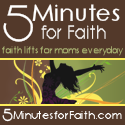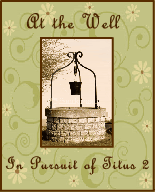
Further study, however, has given me some new insights about the lamb. The Passover lamb was selected or chosen five days before Passover. How fitting then, that Jesus should come to Jerusalem on lamb selection day. The Passover Lamb was present and waiting for the sacrifice.
God certainly is a God of the details! The throat of the Passover lamb was to be cut at 3 pm. It was at this time that the shofar was sounded and the people were to reflect on the sacrifice. In addition, the priest said the words, "It is finished" when he sacrificed the lamb. Do you already see the connection in the details? Jesus, The Passover Lamb, cried, "It is finished" when he gave up his spirit at 3 pm on the day day of Passover. Amazing!
There are still things I'm sorting out as I learn about the connections between Christ's life and the Passover, but I'm learning more and more. I'd often wondered how the Last Supper could be a Passover meal (seder) AND yet Jesus could die on Passover. Part of that is resolved with learning more about a day in Hebrew life...it's actually sundown to sundown. But what clears up the question even more for me is that traditionally at the time of the temple there were often 2 seders. The first Seder occurred on the 14th and the second on the 15th. So, Jesus was able to share the Passover meal with his disciples and then become our Passover Lamb.
The Passover Seder is another celebration packed with meaning and symbolism. Seder means order and God certainly uses the order found in this 15 step celebration to teach us. The meal begins with Kaddesh. The first cup of wine, the cup of sanctification, is presented and the blessing, "Blessed are you, Lord our God, King of the Universe, who creates the fruit of the vine," is given. Remember that in John 15:1 Jesus tells us he is the True Vine.
If you'd like to read more about the Passover meal, I'd encourage you to. I'm going to highlight several steps in the seder that have special meaning.
The Yachatz, or breaking of bread is of particular significance. During this part of the meal the focus is on 3 pieces of bread. The middle piece of unleavened bread is ceremonially broken in two. The larger of the two broken pieces is wrapped in a napkin and set aside for later in the meal. Did you catch the number of pieces of bread? Three. The Father, the Son, and the Holy Spirit are represented. The Son of God, or Bread of Life, is broken for us.
Near the conclusion of the meal things get more interesting again. At the Tzafun the piece of broken unleavened bread that was hidden in a cloth (afikomen) is found by a child. A ransom is paid for the piece of bread. This bread is then eaten. Loads of importance here. First, the broken bread is brought out into the open. Our broken Savior was laid in a seplecure and then resurrected. A ransom was paid for us to receive life from God.
After this the Barech, or grace after the meal is said. A third cup of wine is celebrated. This cup is called the cup of redemption. It is a cup filled to overflowing. It was probably this cup that Jesus shared with his diciples as a sign of the New Covenant.
The Passover provides us with much food for thought. I hope as Passover and Easter draw close you will have new insights into God's amazing love for us.








No comments:
Post a Comment